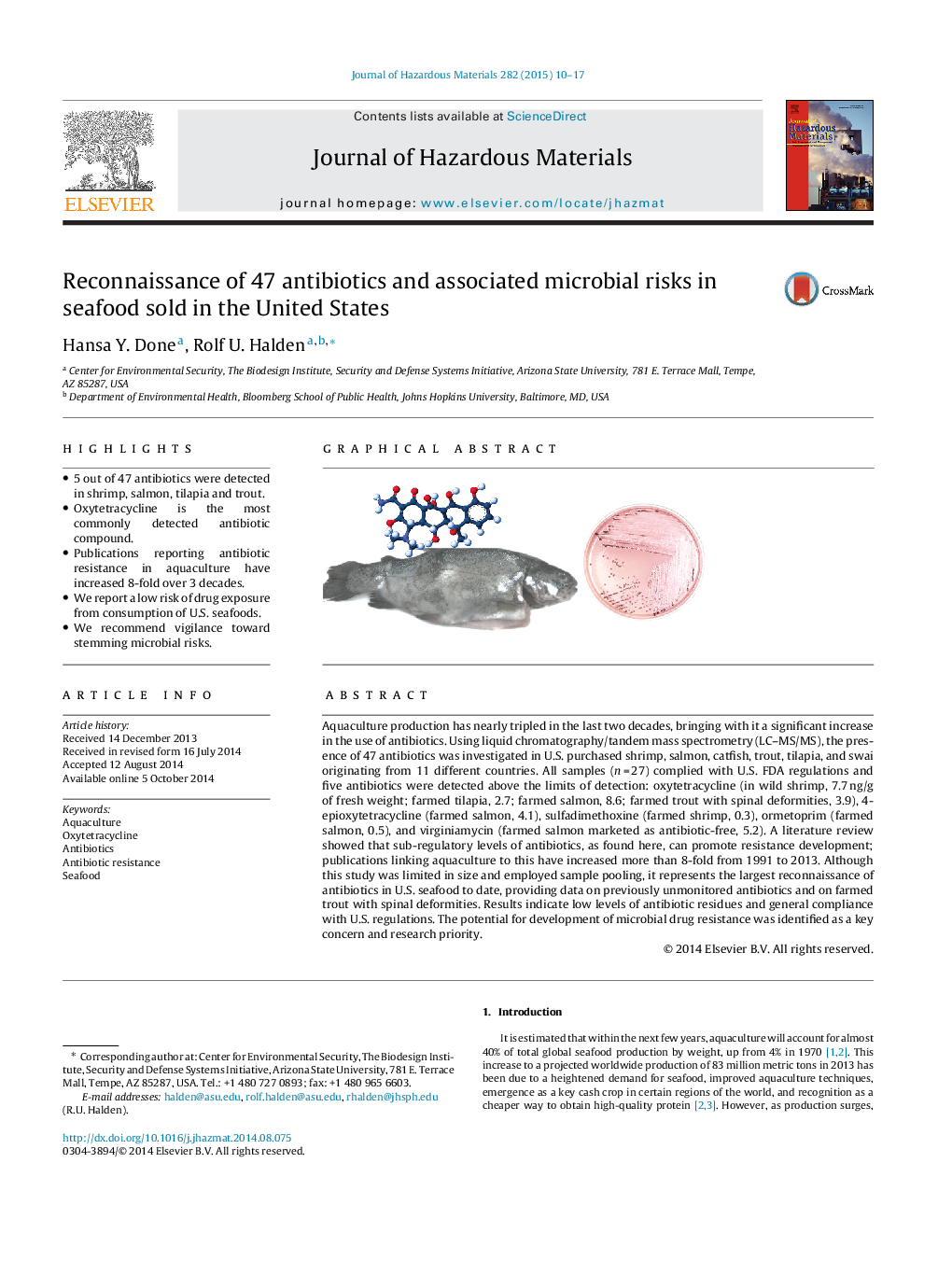| کد مقاله | کد نشریه | سال انتشار | مقاله انگلیسی | نسخه تمام متن |
|---|---|---|---|---|
| 576474 | 1453078 | 2015 | 8 صفحه PDF | دانلود رایگان |
• 5 out of 47 antibiotics were detected in shrimp, salmon, tilapia and trout.
• Oxytetracycline is the most commonly detected antibiotic compound.
• Publications reporting antibiotic resistance in aquaculture have increased 8-fold over 3 decades.
• We report a low risk of drug exposure from consumption of U.S. seafoods.
• We recommend vigilance toward stemming microbial risks.
Aquaculture production has nearly tripled in the last two decades, bringing with it a significant increase in the use of antibiotics. Using liquid chromatography/tandem mass spectrometry (LC–MS/MS), the presence of 47 antibiotics was investigated in U.S. purchased shrimp, salmon, catfish, trout, tilapia, and swai originating from 11 different countries. All samples (n = 27) complied with U.S. FDA regulations and five antibiotics were detected above the limits of detection: oxytetracycline (in wild shrimp, 7.7 ng/g of fresh weight; farmed tilapia, 2.7; farmed salmon, 8.6; farmed trout with spinal deformities, 3.9), 4-epioxytetracycline (farmed salmon, 4.1), sulfadimethoxine (farmed shrimp, 0.3), ormetoprim (farmed salmon, 0.5), and virginiamycin (farmed salmon marketed as antibiotic-free, 5.2). A literature review showed that sub-regulatory levels of antibiotics, as found here, can promote resistance development; publications linking aquaculture to this have increased more than 8-fold from 1991 to 2013. Although this study was limited in size and employed sample pooling, it represents the largest reconnaissance of antibiotics in U.S. seafood to date, providing data on previously unmonitored antibiotics and on farmed trout with spinal deformities. Results indicate low levels of antibiotic residues and general compliance with U.S. regulations. The potential for development of microbial drug resistance was identified as a key concern and research priority.
Figure optionsDownload as PowerPoint slide
Journal: Journal of Hazardous Materials - Volume 282, 23 January 2015, Pages 10–17
